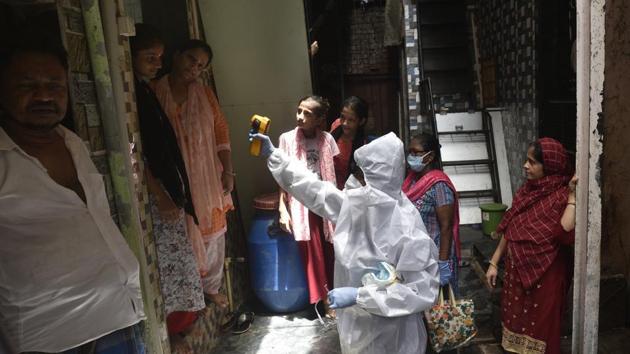A blueprint to improve health systems in cities | Opinion
The pandemic has exposed the weaknesses, inequities and dearth of investment in India’s urban health infra
History is replete with examples of disease outbreaks altering cities and changing lives. In 1849, a cholera outbreak in New York’s congested clusters prompted it to recalibrate its infrastructure. In 1994, Surat’s municipal corporation played a key role in overhauling its sanitary and hygiene systems after the city was hit by the plague. The coronavirus disease (Covid-19) has again reminded the country that strong and resilient health systems act as the first line of defence, not only against outbreaks but in meeting everyday health challenges.

It has underscored the weaknesses, inequities and dearth of investment in urban health infrastructure and serious issues of governance. The pandemic has taken its roots in cities and proven to be the single-most potent disruptive force to the “engines of economic growth”. States with a higher proportion of urban populations are driving up the numbers. In India, while efforts have been made to create tertiary care facilities at the district level, little has been done to reform municipal bodies in urban areas. It is important to distinguish between the two.
Having directed the efforts towards rural India, today the country is faced with the reality of urban health care. About 60% of all hospitalisations in urban India are in the private sector, all of which may not be fully regulated in small, urban slum settlements. While the National Rural Health Mission (NRHM, 2005) was able to address some critical challenges in rural health care, India’s cities continue to struggle under the high burden of diseases.
During this crisis, a stronger and tiered structure of primary health services in cities could have served as the first points of testing and care, alleviating some of the burden on tertiary systems. While the human and economic cost of this crisis cannot be stressed on enough, it is important that we consolidate the learnings and restructure the system. Here are a set of reforms.
One, the National Urban Health Mission (2013) was launched to bring primary health services within the reach of the urban poor. Between 2015-16 and 2017-18, modest progress was achieved under this programme, though its potential remains untapped. Now is an opportune time to revisit the programme. Having a strong network of primary and community health centres in cities, as in rural India, can lead to more equitable health outcomes.
Two, we need to rethink the Smart Cities Mission. Launched with the objective of promoting cities that provide core infrastructure, currently, building health infrastructure is a low priority in the 100 such cities being developed. A closer scrutiny of data of projects taken up under the mission reveals that only 69 of the 5,861 projects were for health infrastructure and capacity-building — this works out to a little over 1% of the total projects selected since 2015. This is an opportunity to recalibrate this scheme and build sustainable cities, better equipped to handle disease outbreaks.
Three, we must remember the linkages between health and other determinants. Families in informal settlements lack a consistent supply of clean water and soap and rely on ill-maintained community toilets and shared taps. With nearly half of Mumbai’s population living in squalid conditions that are emerging as clusters for Covid-19, Maharashtra has the highest burden of the disease in the country. The Swachh Bharat Mission has been able to drive shared understanding about the benefits of sanitation – we must expand on this.
Even the Atal Mission for Rejuvenation and Urban Transformation can be leveraged better to ensure proper infrastructure and improved sanitation channels and networks in cities. Similarly, we can link efforts with initiatives like the National Clean Air Programme (2019), that align policies against air pollution with those under the country’s climate change plan.
Four, we must leverage the strong digital infrastructure. There are many examples of how cities are doing so during the pandemic — including the Agra Smart City Mission’s e-Doctor Seva, a tele-video consultation facility, launched as a public-private partnership. In Chandigarh, there are “fight Covid stations” with thermal screening, pedestal operated hand-wash, soap dispensers. Recent telemedicine guidelines issued by ministry of health and family welfare in collaboration with Niti Aayog and the Medical Council of India, provide for an excellent opportunity to enable health care delivery to the urban poor even beyond the lockdown period. With such use of digital technology, we can manage health facilities more effectively, and ensure better disease surveillance and data collection.
And finally, given the high proportion of patients seeking care in the private sector, it’s important to harness its large pool of resources so that more people can access quality services. More public private partnerships can ensure better regulation and monitoring so that protocols are followed.
As per a Boston Consulting Group estimate (2017), about 40% of India’s population will be living in urban areas by 2025. It is imperative that the government re-imagines these spaces to meet the needs of the people. By building or upgrading infrastructure, including a trained workforce, it cannot only address epidemics, but also provide quality health care. India’s has the framework, it must act on it.






